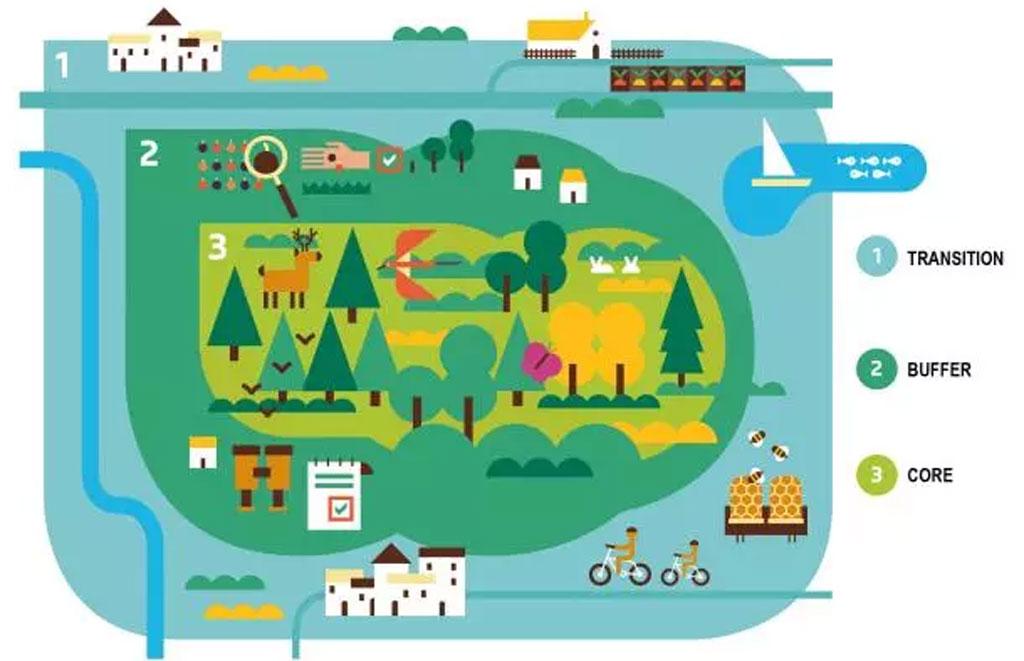A fascinating Veneto landscape, defined by no less than 81 volcanic hills between 300 and 600 metres in height, ranging from thermal spas to verdant plains adorned with olive groves and vineyards.
Spread over 15 municipalities, the area is rich in natural and cultural heritage. The region’s volcanic history and thermal waters contribute to its appeal, making it the largest thermal basin in Europe. With a total area of 341 km², the biosphere reserve is home to a population of 111,368.
Endowed with a wide range of flora and fauna endemic to the Veneto plain, the Biosphere Reserve has established partnerships with universities and a comprehensive management framework in which sustainable agriculture and ecotourism are promoted, while ensuring participatory governance to lay the foundations for a harmonious coexistence between human economic activities and environmental conservation.
What is a Biosphere Reserve, or MAB
The UNESCO MAB Programme (MAB = Man and Biosphere) is an intergovernmental initiative of UNESCO’s science sector that has been promoting, since 1971, the idea that socio-economic development and the conservation of ecosystems and biological and cultural diversity are compatible with each other, i.e. ‘Sustainable Development’, the connection between man and nature for a positive future of both.
759 Biosphere Reserves in 136 States
Under this programme, a worldwide network of Biosphere Reserves, areas comprising terrestrial, marine/coastal ecosystems, or a combination thereof, has been established, internationally recognised in the very structure of the UNESCO MAB Programme, where the emphasis is on integrated, participatory and decentralised forms of development management.
Biosphere reserves involve local communities and all stakeholders in planning and management.
They integrate three main functions:
1. Conservation of Biodiversity and Cultural Diversity
2. Economic development that is socio-culturally and environmentally sustainable
3. Logistical support to sustain development through research, monitoring, education and training
These three functions are pursued through the three main zones of the Biosphere Reserves
Core areas: comprise a strictly protected area that contributes to the conservation of landscapes, ecosystems, species and genetic variation.
Buffer zones: surround or border core areas and are used for activities compatible with good ecological practices that can enhance scientific research, monitoring, training and education.
Transition area: The transition area is where communities promote socio-culturally and ecologically sustainable economic and human activities.




